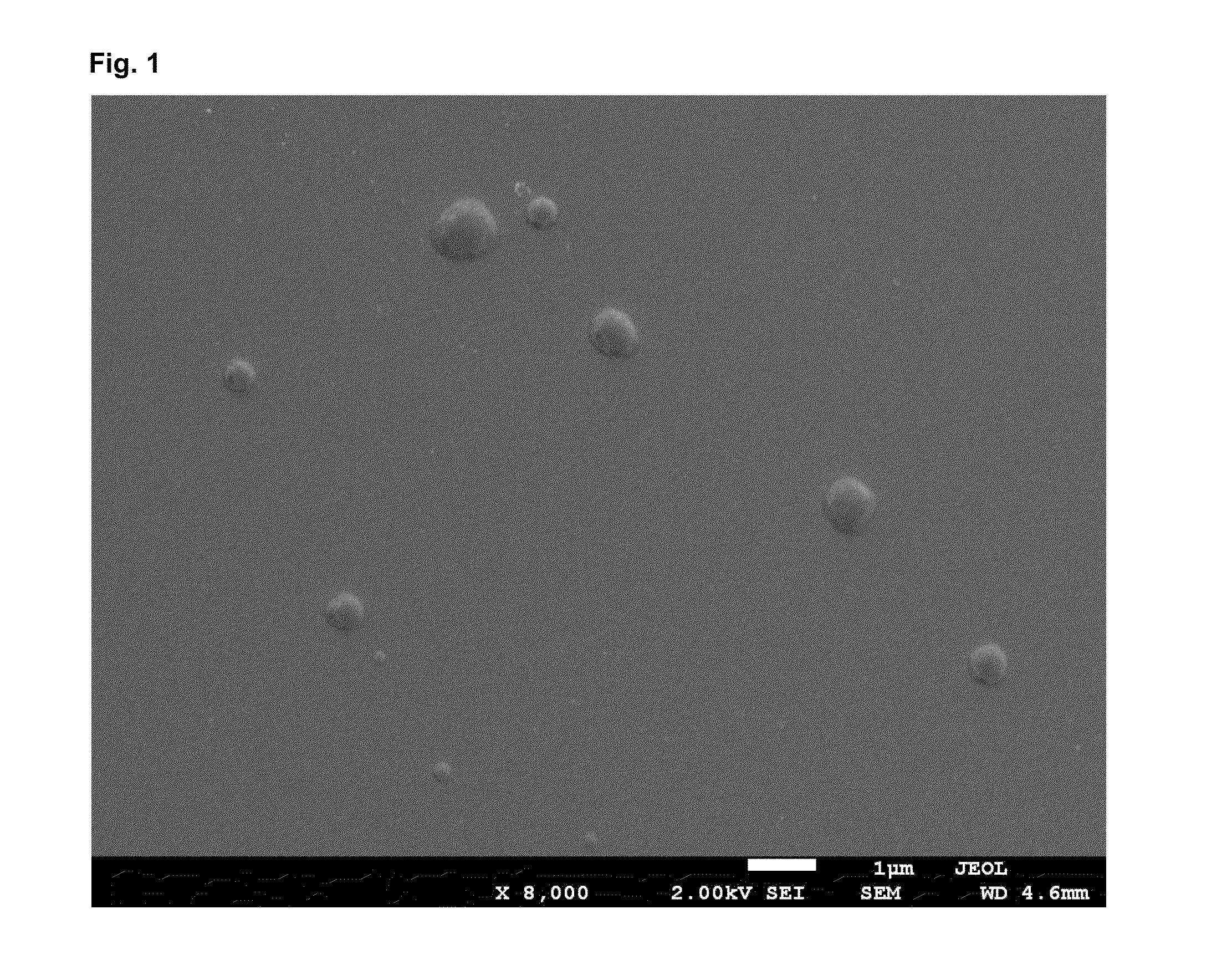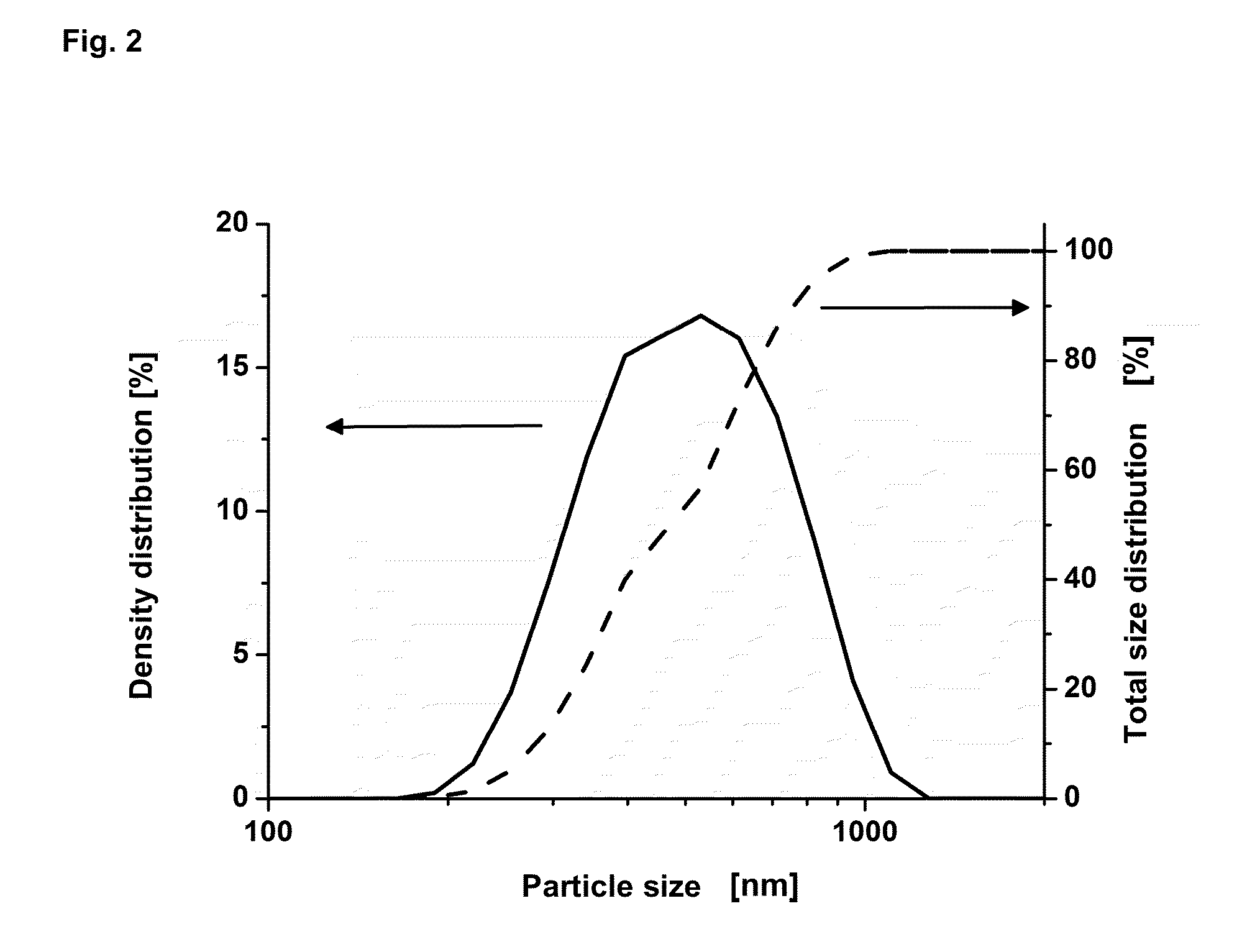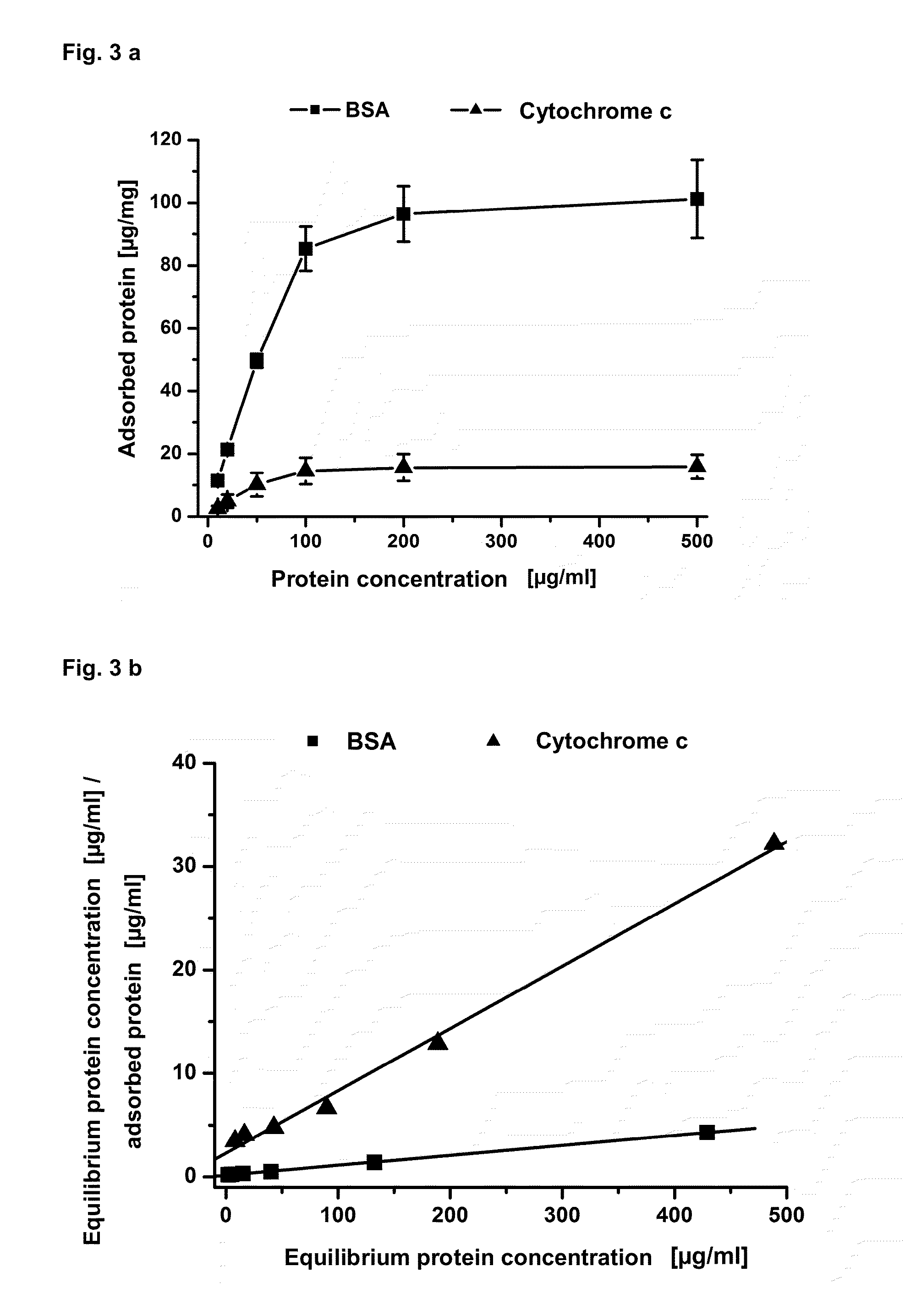Biodegradable nano-, meso-, and micro-polymer particles for maintaining a low surface tension in the lung and for protecting the pulmonary surfactant
- Summary
- Abstract
- Description
- Claims
- Application Information
AI Technical Summary
Benefits of technology
Problems solved by technology
Method used
Image
Examples
embodiments
[0052]Further characteristics, details and advantages of the invention derive from the wording of the claims as well as from the following description of exemplary embodiments on the basis of added figures. These figures show:
[0053]FIG. 1 Scanning electron microscopic image of Eudragit E100 nanoparticles with a mean particle size of approximately 500 nm
[0054]FIG. 2 Graphs demonstrating the particle size distribution as determined by dynamic light scattering (DLS) for newly prepared Eudragit® E100 nanoparticles with a mean particle size of approximately 500 nm. The solid line represents the particle size density distribution, the dashed line the cumulative particle size distribution.
[0055]FIG. 3a, b Adsorption capacity (Γ) of Eudragit E100 nanoparticles with a mean particle size of approximately 500 nm for BSA and cytochrome c after incubation of particles with respective proteins in different concentrations (a) and BSA- and cytochrome c adsorption data fitted to the Langmuir model (...
PUM
| Property | Measurement | Unit |
|---|---|---|
| Length | aaaaa | aaaaa |
| Angle | aaaaa | aaaaa |
| Mass | aaaaa | aaaaa |
Abstract
Description
Claims
Application Information
 Login to View More
Login to View More - R&D
- Intellectual Property
- Life Sciences
- Materials
- Tech Scout
- Unparalleled Data Quality
- Higher Quality Content
- 60% Fewer Hallucinations
Browse by: Latest US Patents, China's latest patents, Technical Efficacy Thesaurus, Application Domain, Technology Topic, Popular Technical Reports.
© 2025 PatSnap. All rights reserved.Legal|Privacy policy|Modern Slavery Act Transparency Statement|Sitemap|About US| Contact US: help@patsnap.com



